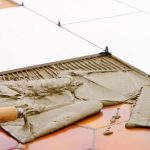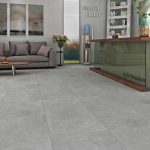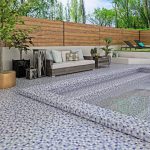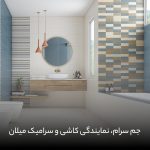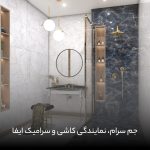Today, various coatings are used for the floor and walls, but to choose a suitable coating for the floor and walls of your building, you must consider all the factors. Another one of the most widely used materials used in building construction is ceramic tiles, which have many types and are used in different parts of a building, including kitchens, bathrooms and toilets, yards, parking lots, and even building facades, greenhouses, and decorative ponds. In general, one of the positive features of ceramics is its high physical resistance and resistance to freezing, another important feature is its fire resistance and that it does not change shape against fire, does not change color over time, and is resistant to sunlight.
Today, various coatings are used for the floor and walls, but to choose a suitable coating for the floor and walls of your building, you must consider all the factors.
Another one of the most widely used materials used in building construction is ceramic tiles, which have many types and are used in different parts of a building, including kitchens, bathrooms and toilets, yards, parking lots, and even building facades, greenhouses, and decorative ponds.
In general, one of the positive features of ceramics is its high physical resistance and resistance to freezing, another important feature is its fire resistance and that it does not change shape against fire, does not change color over time, and is resistant to sunlight. Tile and ceramic are not much different, the glaze that covers the hard part of the tile and gives it a beautiful shape, can be of different materials, if it is made of ceramic, it is called ceramic tile or ceramic. Of course, in the past, the dimensions of tiles were smaller than ceramics, but now tiles are produced in various sizes.
Of course, in addition to its use in the floor, facade, and walls of buildings, ceramics are also used in the production of sanitary ware and construction materials such as bricks, decorative clays inside and outside, roof tiles, sewage channels, and antacid clays.
One of the most important reasons for using tiles in building architecture is that it is hygienic compared to stone, cement and other materials, and the other is that ceramic tiles are also waterproof. A good tile should be in a way that it can withstand sudden temperature changes between 20 and 100 The grade should bear well and not have cracks in the body or glaze, otherwise this tile is not of good quality. The size of the tile, if it is used for the floor and wall, should be produced in dimensions less than 20 x 20 or 10 x 20 to 50 x 50 cm. One of the visual attractions of ceramic tiles is the unique variety of designs and colors that you may even get confused.
Walls are used to maintain more hygiene and to protect against moisture in kitchens, sanitary environments, bathrooms and toilets, because their cleaning is much easier than other wall coverings and lowers the cost of maintenance. In the floor, it is used in kitchens and bathrooms due to its anti-wear, high thermal and electrical resistance.
Glazed tile is one of the old types of tile that is mostly used for decorative purposes. In Iran, artisans used oxides of metals such as tin, copper, cobalt, magnesium, and antimony to glaze tiles. This type of tile is found throughout South Asia, North Africa. It is produced and used in Spain and other parts of Europe and China. Italy is also one of the pioneers of this industry. Basically, the reason for glazing tiles is to have a shiny, smooth, beautiful, waterproof and chemical-resistant surface. There is a type of ceramic called miniature, which are made in the size of 2.5 x 2.5 cm, they have a variety of colors, and they are very easy to install and can be used anywhere, but their most important use is in swimming pools, saunas, and sanitary environments. Nowadays, often Ceramic tile manufacturing companies use clay pressing methods and press the tile material mixture and then glaze and bake it in a kiln, this is the modern way of making ceramic tiles.
One type of tile is porcelain tile, which is produced under special conditions such as high pressing pressure and high baking temperature up to about 1250 degrees Celsius, which causes high strength and low water absorption, and they are stronger than ordinary tiles. These tiles are produced in dimensions of 40×40, 30×60, 66×33, 60×60, and 120×60.
Glazed porcelain tiles also have better technical characteristics than other ceramics due to the high-quality materials of the glaze, because its glaze is poured with a new and special method.
Porcelain tiles are divided into two categories, polished and unpolished, and their main use is in outdoor spaces such as yard floors, parking lots, and building facades, because of their special technical characteristics in spaces exposed to high traffic or changing weather. cold and frost), it is completely resistant and its water absorption is less than other coatings. Compared to natural stone, porcelain tiles have high uniformity and have better resistance to chemicals such as acids and bases. Also, due to their lower thickness compared to stone, it is easier to install and imposes less dead load on the building. It is rail-type and without mortar, so possible damage is reduced and installation is easier.
Recently, researchers have succeeded in using silver nanoparticles to produce a type of antibacterial ceramic tile, which is very suitable for use in sanitary areas of the building and prevents the growth of bacteria and fungi. These nanoparticles are combined in ceramic tile glaze and antibacterial coating tiles and ceramics, and using them in humid places significantly reduces the growth of bacteria and microbes.


